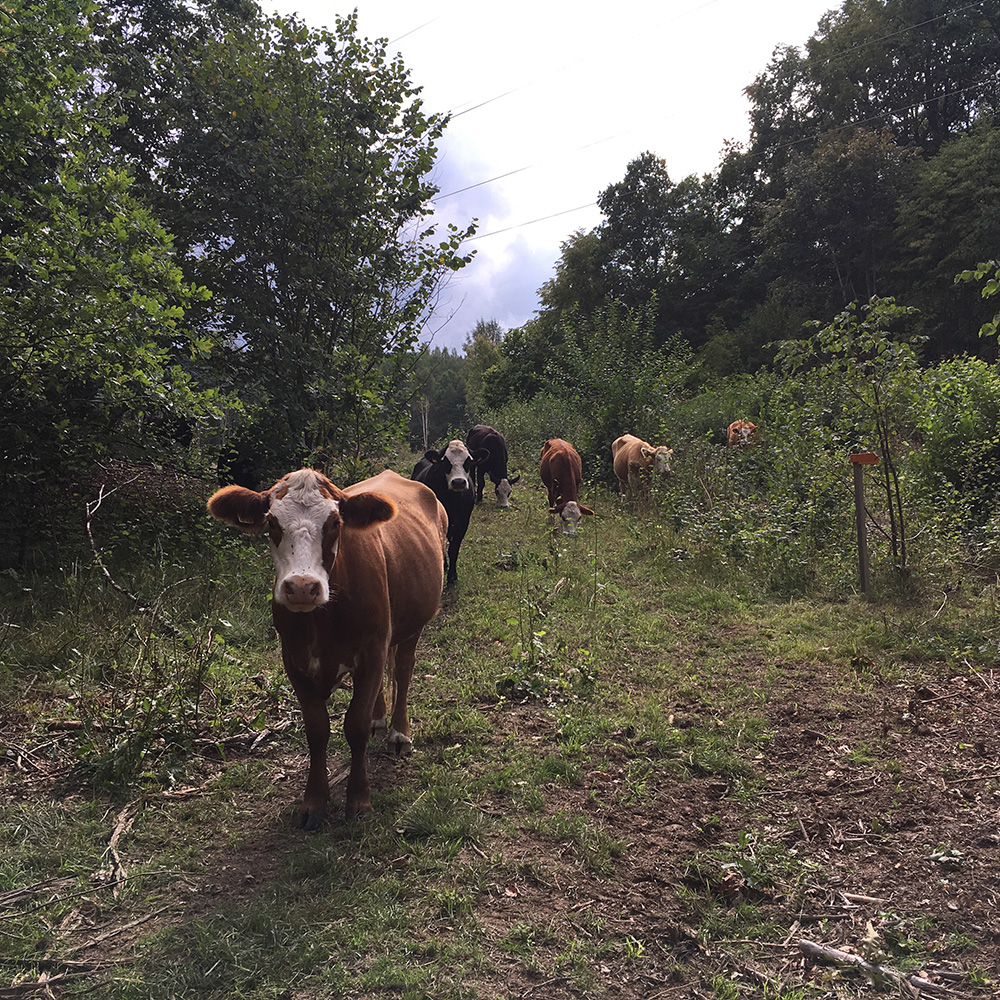When the reserve was founded in 2017, it had 16 hectares of pasture. Within the project, 45 hectares of oak pasture has been restored and five hectares of spruce has been converted to pasture. Historical maps show that a century ago, the area was much more open. During the 20th century, its use as pasture was stopped in much of the area, and the pastures were planted with spruce.
Early collaboration with animal keepers
In the project, large areas were restored to grazing land. For this reason, discussions were held with animal keepers already in the management plan. This early dialogue regarding fencing, water supply and plantations in the pastures made collaboration easier in several ways: shared expectations became clearer and unnecessary limitations in the management plan could be avoided.
Fence location, gates and catching pens are planned to facilitate transport of the animals between the pens. Existing fences are adjusted so that as many pastures as possible will have access to natural water. One ley, which was initially intended to be part of the same grass- land as the pasture, was fenced off. This turned out to be very fortunate during the dry year of 2018, because there was a shortage of fodder to harvest.
A restoration in three stages
The restoration work was, for various reasons, split into several stages. Doing everything at once would have been time consuming because the area is large and geographically diverse. Also, large volumes of timber had to be managed, mainly because of the decommissioning of several spruce plantations. By staging the restoration, the felling could be completed while the ground and weather conditions were conducive. Another advantage was that all the sub-areas could be fenced off immediately after felling. As a result, the grazing animals could be released in the same year as the restoration.
In the dense coastal woodlands, it was beneficial to let the animals graze for a few seasons before felling. When grazing, the animals created paths and clearings, which provided a starting point for the planning. The various stages made it possible to gradually change the habitat, without the oldest trees and their cryptogamic flora being shocked by the light. In the first stage, the large spruce plantations were decommissioned, and so as not to shock the older trees nearby, clearing around them was not done for a few years. Again, there were discussions about how intensive the felling should be, considering that the area had been overgrown for a long time.

